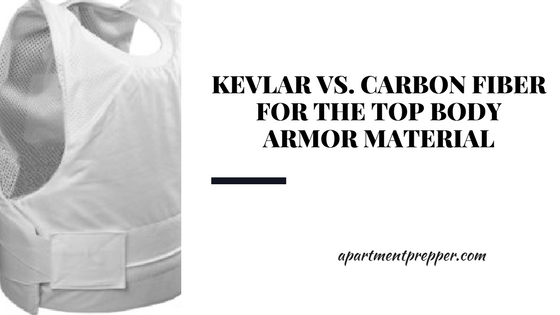Guest post by Anthony McGrath
Carbon fiber and Kevlar are materials that are used for making bulletproof vests protective inserts. They are known to be the most composite materials that are strong and function extremely well. They have been used frequently used in different areas like sports cars, aviation, and body armors. These two materials are mostly used for similar purposes but they differ in some important aspects.
Kevlar
Kevlar has been a revolutionary material and has been used for making body armor for decades. It uses the aromatic polyamide fiber that helps in making a more durable sheet that contains continues filament. The body armor should be strong enough and should be able to protect the wearer from any kind of impact. If the body armors are reliable enough then the percentage of death and bullet injuries can be reduced easily. Compared to carbon fiber the Kevlar material is engineered with the elastomer technology. The elastomer technology is fully different from the technology used in all the other materials. Some filler like silica and carbon black are used and they help in reducing tear or any type of abrasions. Kevlar is known to be the best for protecting the wearer from any kind of attack. It is not limited to one specific weapon as the Kevlar vests available today protect from projectiles as well as sharp objects. All the other materials are limited to a specific kind weapon.
Kevlar fibers also have a strong resistance to fire and remain in good condition even in the most challenging conditions. Modern vests made of Kevlar materials can be bought from online manufacturers such as Safeguard Armor and are even better and most of the people are opting for these. Kevlar is always considered to be superior over other fabrics. The moisture management in these materials is excellent and this increases the comfort level. Carbon is a cloth that is woven from some strides of graphite. Carbon fiber is made by pasting the strands over the mold with the help of epoxy resin. The strands are pasted in a cross positioning pattern and this helps in increasing the strength of the fiber. While Kevlar is constructed at a microscopic level and the strands are poured in a liquid format.
Kevlar and carbon fiber are strong and have the capacity to provide proper protection. But they act in slightly different ways. The Kevlar remains extremely rigid and buckles only when it is forced under compression.
Carbon Fiber
As compared to Kevlar material carbon fiber is little different and is not very effective against the sharp materials. But the advantage of carbon fiber is that it can stand high temperatures while Kevlar starts to weaken in this area. The materials made of carbon fiber tend to be light. Since they are constructed in a stranded format they are very thick. This reduces their weight and keeps them strong. This reduction in weight is the main reason why they are favored by car racers and aircraft builders. But when extra strength is required then the extra layer used in the Kevlar materials comes into act. It improves the safety level and can also help remain protected against extremely sharp objects.
When it comes to flexibility, Kevlar vests are not known to be good in this area. If the shape is altered, then one needs to compromise on the structure of Kevlar materials. The materials are very rigid and stiff. This stiffness comes into the act when the body armors are manufactured for protection against projectiles. If the flexibility is increased then the force will remain at one point and it will be transferred to the wearer’s body. Carbon fibers can easily be made flexible and their thickness depends on the sheets used. The flexibility of the carbon fibers helps in dissipating the impact energy.
Both materials have their benefits and have been proven to protect against ballistic weaponry and should be considered as a primary soft armor protection type.
Guest post by Anthony McGrath, body armor, and protective clothing expert. He writes regular articles on body armor and bulletproof protection.
We are an affiliate of Amazon.com, which means we received a small commission if you click through one of our Amazon links when you shop, at totally no cost to you. This helps keep the lights on at the blog. Thanks!
Try Prime for free

